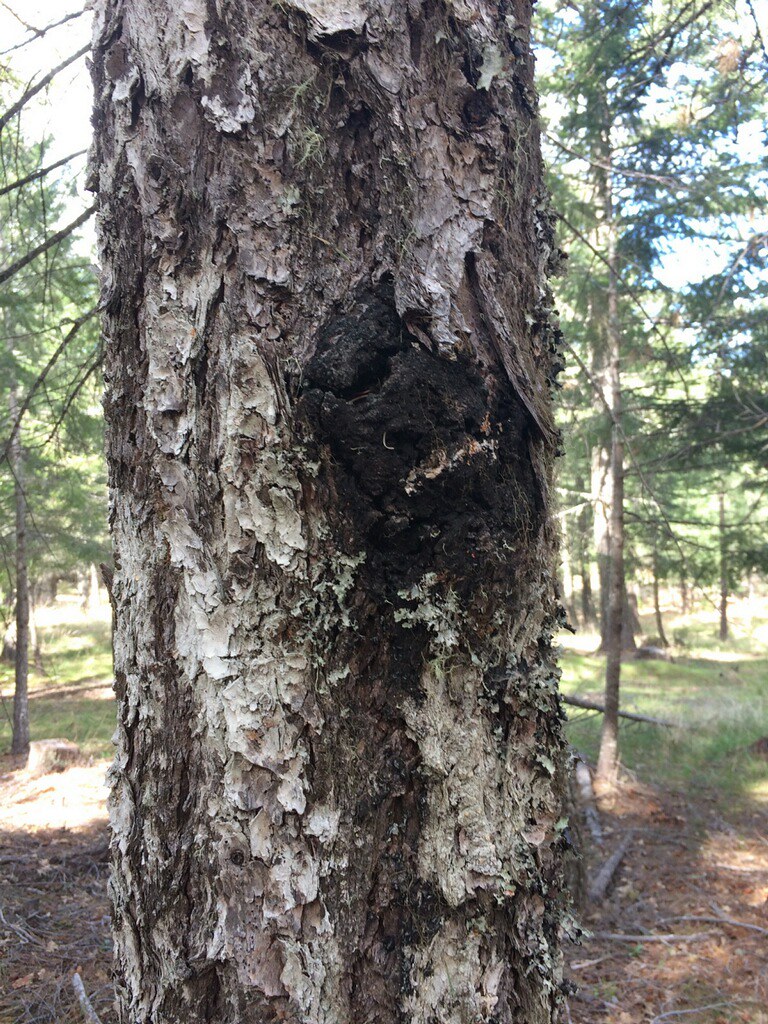
Cytospora canker
Cytospora spp.
What is Cytospora canker (Cytospora spp.)?
Cytospora canker, caused by various species of the fungus Cytospora, is a plant disease that affects a wide range of trees and shrubs. Commonly infected plants include aspen, cottonwood, poplars, apple, cherry, peach, plum, birch, willow, honeylocust, mountain ash, silver maple, spruce, and Siberian elm. Symptoms include branch dieback, elongated sunken cankers, discoloration of bark and wood, oozing of liquid or gummy substances, and black speckling or pimples on cankers. The disease primarily targets weakened or stressed plants and can cause significant damage if not properly managed.
How does Cytospora canker (Cytospora spp.) occur?
Cytospora canker reproduces through both sexual and asexual spores. The spores are released from fruiting bodies that develop in infected bark, typically during moist weather conditions. The asexual spores, called conidia, are dispersed by wind and rain splash. These spores infect freshly wounded tissue, such as pruning cuts or injuries caused by insects or other factors. The fungus grows within the living bark and wood of the host plant, causing cankers and eventually leading to girdling and tree or branch death.
Symptoms
1 - Effects on Plants
Cytospora canker can have significant detrimental effects on infected plants. It causes branch dieback, leading to reduced vigor, loss of foliage, and an overall decline in plant health. In severe cases, it can result in the death of the entire tree or shrub.
2 - Effects on Soil
The presence of Cytospora canker does not have direct effects on soil. However, the death and decay of infected plants can contribute to organic matter accumulation and nutrient cycling within the soil ecosystem.
3 - Effects on the Environment
• Cytospora canker can impact the environment by reducing the aesthetic and ecological value of affected landscapes. • The loss of trees and shrubs can disrupt ecosystems, affect wildlife habitats, and alter the microclimate in the surrounding area.
Solutions
1 - Cultural Practices
• Choose well-adapted species or varieties and consider their resistance to Cytospora canker. • Provide adequate watering, fertilization, and pruning to maintain plant health and reduce stress. • Take precautions during planting, pruning, and maintenance activities to minimize injuries that can serve as entry points for the fungus. • Implement good cultural practices to promote plant vigor and resilience against infections.
2 - Sanitation and Pruning Techniques
• Regularly inspect plants for cankers and promptly remove infected branches or trees to prevent disease spread. • Make clean cuts close to the trunk or main branch, without damaging the branch collar, to minimize infection risks. • Seek advice from arborists, horticulturists, or plant disease specialists for diagnosis and effective management strategies.
3 - Chemical Control
• Thiophanate-methyl (brand names: Cleary's 3336, Topsin-M) • Myclobutanil (brand names: Immunox, Eagle) • Propiconazole (brand names: Banner MAXX, Alamo) • Boscalid + Pyraclostrobin (brand name: Insignia) • Copper-based fungicides (e.g., Bordeaux mixture) Please note that availability and specific recommendations may vary depending on your location and local regulations. It is important to consult with local experts, such as agricultural extension services or professional arborists, for guidance on suitable fungicides and their application methods.
